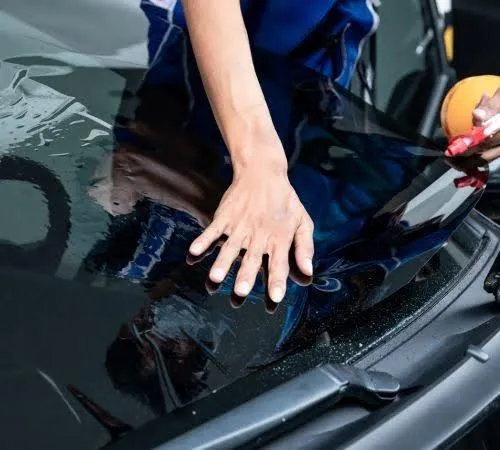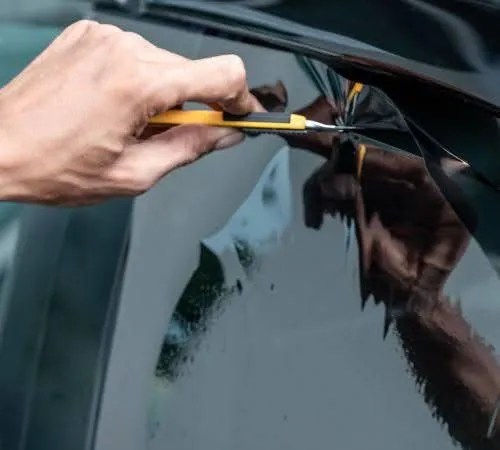Architectural Window Tint: 5 Compelling Reasons to Consider It
Architectural Window Tint: 5 Compelling Reasons to Consider It
Why Architectural Window Tint?
Cost-Effective and Energy-efficient Tinting

Architectural window tinting plays a crucial role in improving energy efficiency for both residential and commercial properties. By reducing the amount of heat that enters a building, window tint can help maintain a more stable indoor temperature. This can significantly reduce reliance on air conditioning during hot months, leading to lower energy bills.
In colder months, window tint helps to retain heat inside, further optimizing energy usage and cutting heating costs. The energy-efficient properties of architectural window tint make it an ideal solution for anyone looking to save money on utility bills and reduce their environmental impact.

Protect Your Interiors from UV Rays
One of the most significant advantages of architectural window tint is UV protection. UV rays can cause severe damage to furniture, flooring, and other materials in your home or office. Over time, exposure to UV radiation leads to fading and deterioration, reducing the lifespan of your valuable interior items. By installing window tint, you can significantly reduce this risk, ensuring your investment in furniture and décor lasts longer without the need for frequent replacements.
Window tints with UV-blocking capabilities can block up to 99% of harmful UV rays, preventing these damaging effects. This not only helps preserve the aesthetics of your interior spaces but also protects your skin from harmful sun exposure. Whether it's for your home, office, or storefront, UV protection is a must-have for both comfort and long-term preservation.
Improving Privacy and Security with Home Window Film

Architectural window tinting provides improved privacy and security for homes and commercial buildings. By darkening the windows, it makes it more difficult for outsiders to see inside, offering an added layer of privacy. This is especially valuable for offices where sensitive information may be at risk or in residential spaces where personal activities occur.
Importantly, window tint acts as a deterrent to break-ins. In the event of an attempted break-in, tinted windows can make it harder for intruders to break the glass or gain access.
Architectural window tinting provides improved privacy and security for homes and commercial buildings. By darkening the windows, it makes it more difficult for outsiders to see inside, offering an added layer of privacy. This is especially valuable for offices where sensitive information may be at risk or in residential spaces where personal activities occur.
Importantly, window tint acts as a deterrent to break-ins. In the event of an attempted break-in, tinted windows can make it harder for intruders to break the glass or gain access.

This extra layer of UV protection for buildings contributes to overall security, making architectural tint a practical investment for both privacy and safety.
With the increased security and privacy offered by architectural window tint, you can feel more comfortable knowing that your property is better protected from prying eyes. It also provides peace of mind by reducing the risk of theft or unwanted attention. Whether you're looking to safeguard sensitive business information or keep the inside of your business premises more secure, office privacy tint is a reliable solution. This added protection can also improve employee focus by minimizing distractions from the outside world.
Boost Curb Appeal and Aesthetics
When it comes to the practical architectural window tint benefits, window tinting also improves the curb appeal of your property. The sleek, uniform look of tinted windows boosts the overall aesthetics of your building, creating a modern, polished appearance. Whether it’s a residential home, office building, or storefront, adding window tint can improve the visual appeal and make a positive impression on visitors and customers.
For commercial properties, it can also help with brand consistency, as you can choose a tint that complements the overall design and color scheme of your brand. Investing in window tint doesn’t just make your property more functional—it also makes it more visually appealing.
Protecting Against Glare - Adding Comfort Inside Any Building
Another advantage of architectural window tinting is its ability to reduce glare from the sun. This is especially beneficial for office spaces where employees are working near windows. The glare from direct sunlight can cause discomfort and eye strain, affecting productivity.
Window tinting helps reduce this glare, providing a more comfortable and productive work environment. It also improves the viewing experience in homes by preventing sunlight from interfering with screen visibility, whether it’s for watching TV, using a computer, or reading. Reducing glare is an often-overlooked benefit that greatly improves comfort inside any building.
Another advantage of architectural window tinting is its ability to reduce glare from the sun. This is especially beneficial for office spaces where employees are working near windows. The glare from direct sunlight can cause discomfort and eye strain, affecting productivity.
Window tinting helps reduce this glare, providing a more comfortable and productive work environment. It also improves the viewing experience in homes by preventing sunlight from interfering with screen visibility, whether it’s for watching TV, using a computer, or reading. Reducing glare is an often-overlooked benefit that greatly improves comfort inside any building.


By choosing architectural window tint, you are ensuring that your living and working spaces remain glare-free, making daily activities more enjoyable and less stressful. For office settings, this reduction in glare can contribute to better focus and fewer distractions, leading to increased productivity. This added comfort boosts the overall experience, whether you are in a home or office setting. Moreover, it can reduce the need for excessive artificial lighting, making your space more energy-efficient and reducing electricity costs significantly.
Long-Term Savings with Window Tint
While the initial investment in architectural window tinting may seem like an added cost, it quickly pays off with long-term savings. The energy-efficient tinting reduces the need for excessive heating and cooling, lowering utility bills year-round. This reduction in energy consumption not only cuts down on your monthly expenses but also contributes to a more sustainable living or working environment. Over time, these savings can more than makeup for the initial cost of installation.
Moreover, window tint also helps preserve your interior furnishings, reducing the need for costly replacements of furniture, flooring, and other materials that might fade or degrade from sun exposure. The protection against UV rays keeps your interior colors vibrant and your materials intact, extending their lifespan significantly. With its ability to save on both energy costs and interior maintenance, architectural window tinting is a cost-effective solution that benefits homeowners and business owners alike.
Professional Installation by Sun Shield Lubbock
When it comes to installing architectural window tint, it’s crucial to choose a professional service that ensures a perfect finish. Sun Shield Lubbock specializes in the installation of high-quality architectural window tints for residential and commercial properties. Our expert team is trained to provide flawless and precise installations that maximize the architectural window tint benefits. With years of experience and attention to detail, we guarantee that your tint will be applied correctly the first time, minimizing the risk of bubbles or imperfections.
By working with Sun Shield Lubbock, you can trust that your tint will be applied expertly, ensuring optimal performance for years to come. We pride ourselves on offering incredible customer service and delivering top-notch results for every installation.
The Best Window Tint for Your Property
Choosing the right window tint for your property is essential to ensure you get the most out of your investment. Sun Shield Lubbock offers a variety of architectural window tinting options, each designed to meet different needs. Whether you want to reduce energy costs, improve privacy, or protect your interiors, we have a solution that fits your goals. Our team works closely with you to recommend the best tint based on your preferences and property requirements. With a variety of films available, we ensure that your selection not only meets your functional needs but also complements the aesthetic of your space.
Our high-performance films provide superior heat rejection, UV protection, and glare reduction, making them perfect for homes, offices, and storefronts. With our expert installation and a wide selection of tinting options, you can enjoy all the architectural window tint benefits tailored to your specific needs.
Get our latest news and promos


SATISFACTION GUARANTEED

UNPARALLELED SUPPORT
Sun Shield of Lubbock
Social Media
Payments Accepted







